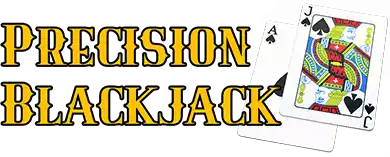Advanced Blackjack Strategies: How to Outsmart the Dealer
Advanced Blackjack Strategies: How to Outsmart the Dealer
Elevating Your Blackjack Game
Blackjack is often touted as a game where skill and strategy can significantly tilt the odds in your favor. While mastering basic strategy is essential for any serious player, those looking to truly outsmart the dealer and gain a consistent edge must delve into more advanced techniques. These strategies go beyond the basics, requiring a deeper understanding of the game’s mechanics, probabilities, and psychology.
In this article, we’ll explore some advanced blackjack strategies that can help you outsmart the dealer and maximize your potential for profit. Whether you’re an experienced player looking to refine your skills or someone eager to move beyond basic strategy, these advanced tactics will give you the tools you need to elevate your blackjack game.
The Importance of Basic Strategy as a Foundation
Before diving into advanced strategies, it’s crucial to emphasize that basic strategy is the foundation of all successful blackjack play. If you haven’t yet mastered basic strategy, it’s essential to do so before moving on to more complex techniques. Basic strategy minimizes the house edge and ensures that you’re making the mathematically correct decision in every situation.
Once you’re comfortable with basic strategy, you can begin to layer advanced techniques on top of it, enhancing your gameplay and giving you an edge over the house.

Advanced Strategy 1: Card Counting
Card counting is perhaps the most famous advanced blackjack strategy, and for good reason—it’s one of the few ways to gain a measurable edge over the casino. While card counting is often portrayed as a complex or even nefarious technique, it’s actually a straightforward mathematical approach to the game.
How Card Counting Works
Card counting involves keeping track of the ratio of high cards (10s, face cards, and Aces) to low cards (2-6) that have been dealt from the deck. When the deck is rich in high cards, the player has an advantage because the likelihood of hitting a strong hand or blackjack increases. Conversely, when the deck is rich in low cards, the dealer is more likely to win.
The most common card counting system is the Hi-Lo system, where:
- Low cards (2-6) are assigned a value of +1.
- High cards (10-Ace) are assigned a value of -1.
- Neutral cards (7-9) are assigned a value of 0.
By keeping a running count of these values, players can adjust their betting and playing decisions based on the remaining cards in the deck.
Implementing Card Counting
To implement card counting effectively:
- Practice Keeping the Count: Start by practicing card counting at home, using a single deck of cards. As you deal out the cards, maintain a running count in your head. Once you’ve mastered this with one deck, try it with multiple decks to simulate real casino conditions.
- Adjust Your Bets: Increase your bets when the count is positive (indicating a deck rich in high cards) and decrease your bets when the count is negative. This allows you to maximize your winnings when you have an advantage and minimize losses when the odds are against you.
- Stay Stealthy: Card counting is not illegal, but it’s frowned upon by casinos. If you’re suspected of counting cards, you may be asked to leave or face other countermeasures like frequent shuffling. To avoid detection, vary your bet sizes subtly and avoid making sudden or dramatic changes.
Advanced Strategy 2: Shuffle Tracking
Shuffle tracking is an advanced technique that takes card counting to the next level. It involves tracking groups of cards (known as slugs) through the shuffle process to predict when they’ll reappear in the game. This strategy requires a keen eye and a deep understanding of how cards are shuffled in the casino.
How Shuffle Tracking Works
Shuffle tracking involves observing how the dealer shuffles the cards, paying close attention to clumps or slugs of high-value cards that remain together during the shuffle. By keeping track of these slugs, you can anticipate when they’ll re-enter play and adjust your strategy accordingly.
For example, if you’ve identified a slug of high cards that is likely to appear in the next few hands, you can increase your bets or make more aggressive plays when that slug comes into play.
Implementing Shuffle Tracking
- Observe the Shuffle: The first step in shuffle tracking is to closely observe how the dealer shuffles the cards. Look for patterns, especially in hand-shuffled games, where certain groups of cards may stay together through the shuffle process.
- Track the Slugs: Once you’ve identified a potential slug of high cards, mentally track its position as the cards are dealt. This requires sharp focus and a good memory, as the slug may move around the deck during the shuffle.
- Capitalize on the Slug: When the slug is likely to be dealt, increase your bets and make more aggressive plays. This is where shuffle tracking can give you a significant edge over the house, but it requires precise timing and a deep understanding of the shuffle process.
Advanced Strategy 3: Hole Carding
Hole carding is an advanced technique that involves trying to catch a glimpse of the dealer’s hole card (the face-down card) during the dealing process. This strategy is highly situational and requires excellent observation skills, as well as a bit of luck.
How Hole Carding Works
Hole carding relies on the dealer inadvertently revealing part of their hole card while dealing. This might happen if the dealer is careless or if the angle at which they deal the cards makes the hole card visible to certain players. If you can see the dealer’s hole card, you gain a significant advantage, as you can make decisions based on knowledge of the dealer’s total hand rather than just their upcard.
Implementing Hole Carding
- Choose the Right Seat: Position yourself in a seat with the best view of the dealer’s hole card. This is usually the first base (the seat immediately to the dealer’s left) or third base (the seat immediately to the dealer’s right).
- Stay Observant: Keep a close eye on the dealer’s hands as they deal the cards. Look for any opportunities to catch a glimpse of the hole card, but be subtle—if the dealer or pit boss notices, they may take steps to correct their dealing technique or ask you to leave.
- Make the Most of the Information: If you’re able to see the dealer’s hole card, use that information to guide your decisions. For example, if you know the dealer has a weak hand, you might choose to double down or split pairs more aggressively.
Advanced Strategy 4: Wonging (Back-Counting)
Wonging, also known as back-counting, is a strategy named after the famous blackjack author Stanford Wong. It involves observing a blackjack table without actively participating, waiting for the count to become favorable before joining the game. This allows you to enter the game only when the odds are in your favor.
How Wonging Works
When you wong a table, you stand behind the players and keep a running count of the cards as they’re dealt. Once the count becomes sufficiently positive, indicating a deck rich in high cards, you join the game and start betting. By doing this, you avoid playing during unfavorable counts and maximize your chances of winning.
Implementing Wonging
- Find a Table to Wong: Choose a blackjack table with several active players, as this will allow you to observe multiple hands and build an accurate count.
- Stay Under the Radar: While you’re back-counting, blend in with the crowd. Avoid making it obvious that you’re counting cards, and don’t linger too long without joining the game, as this can arouse suspicion.
- Join When the Count is High: Once the count is favorable, take a seat at the table and start betting. Be prepared to leave the table or reduce your bets if the count turns negative.
Advanced Strategy 5: Betting Systems
Betting systems involve varying your bet sizes based on the outcome of previous hands. While betting systems alone cannot overcome the house edge, when combined with card counting or other advanced strategies, they can help you manage your bankroll and maximize your profits during favorable situations.
Popular Betting Systems
- The Martingale System: This system involves doubling your bet after each loss, with the idea that a win will eventually recover all previous losses and produce a profit. While risky, the Martingale System can be effective in the short term, but it requires a substantial bankroll and discipline to avoid going bust during a long losing streak.
- The Paroli System: The Paroli System, also known as the Reverse Martingale, involves doubling your bet after each win, allowing you to capitalize on winning streaks. This system is less risky than the Martingale and can help you maximize profits when the odds are in your favor.
- The 1-3-2-6 System: This betting system is designed to minimize risk while still allowing for substantial profits. The idea is to increase your bets in a specific sequence (1 unit, 3 units, 2 units, 6 units) after each win, returning to the initial bet after a loss. This system works best during short winning streaks.
- Precision Blackjack: Precision Blackjack is a highly regarded tutorial betting system designed for serious players who are looking to maximize their success at the blackjack table. What sets Precision Blackjack apart is its methodical approach, combining advanced betting strategies with in-depth card counting techniques. The system offers a structured path to mastering the game, making it an essential tool for players who want to outsmart the dealer and consistently come out ahead. With its focus on precision and discipline, it’s a go-to system for those committed to taking their blackjack skills to the next level.
Conclusion: Mastering Advanced Blackjack Strategies
Advanced blackjack strategies offer a way to outsmart the dealer and gain an edge over the house, but they require skill, discipline, and practice. Whether you’re counting cards, tracking shuffles, or using betting systems, these techniques can significantly enhance your gameplay when executed correctly.
However, it’s important to remember that no strategy guarantees a win every time. Blackjack is a game of probabilities, and even the best players will experience ups and downs. The key to long-term success is to stay disciplined, continually refine your skills, and make informed decisions based on the strategies you’ve learned.
As you continue to practice and implement these advanced strategies, you’ll not only outsmart the dealer but also elevate your blackjack game to new heights. Good luck at the tables, and may your strategies lead to big wins!

